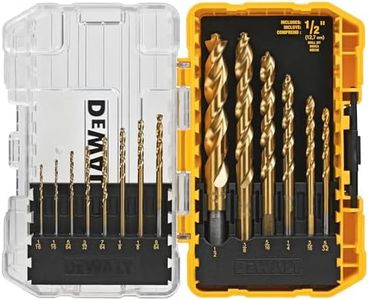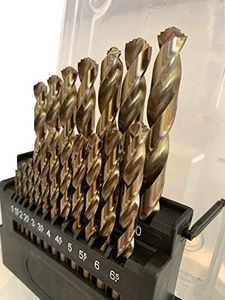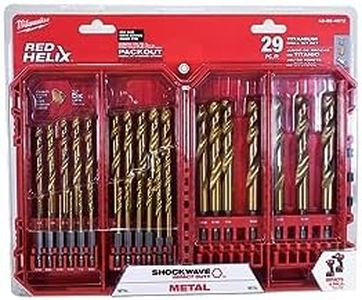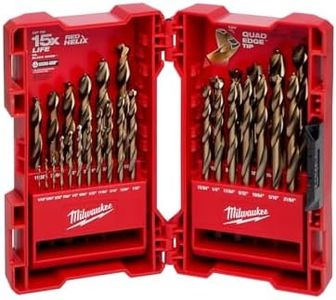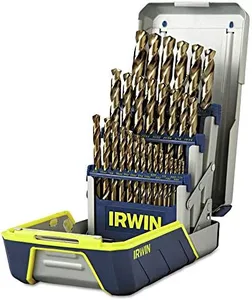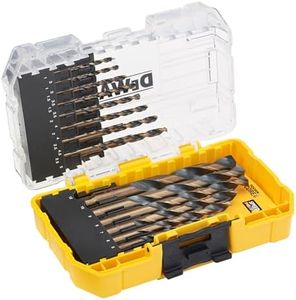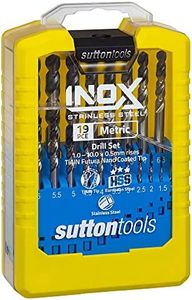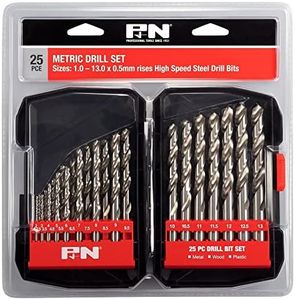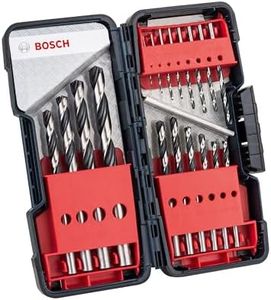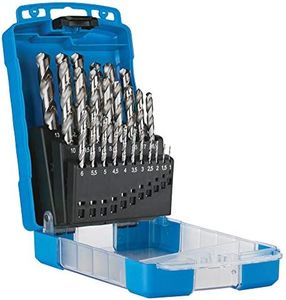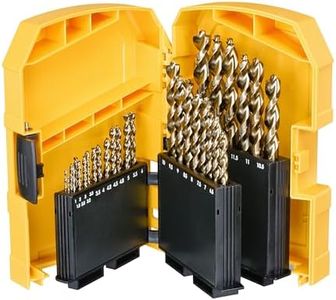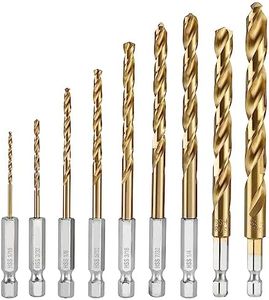We Use CookiesWe use cookies to enhance the security, performance,
functionality and for analytical and promotional activities. By continuing to browse this site you
are agreeing to our privacy policy
10 Best Drill Bits For Metal
From leading brands and best sellers available on the web.Buying Guide for the Best Drill Bits For Metal
When you’re picking drill bits for working with metal, it’s important to match your choice to the type of project you have in mind. The right bit can make a big difference in how smoothly and quickly you drill, as well as how long the bit lasts. Focus on factors like the material of the bit, its coating, size, and tip design. By understanding what each feature offers, you’ll be better equipped to select a drill bit that handles your metalworking jobs safely and effectively.MaterialThe material a drill bit is made from determines both its durability and its ability to cut through metal. The most common materials for metal drill bits are high-speed steel (HSS), cobalt steel alloys, and carbide. HSS bits are generally good for light to moderate use on softer metals, while cobalt bits are more robust and handle tougher or harder metals better. Carbide bits are the hardest and most durable, ideal for repetitive work or drilling in very hard materials, but they can be brittle. If you mostly work with softer metals like aluminum, HSS might be enough. For frequent drilling or harder metals like stainless steel, cobalt or carbide are better fits.
CoatingDrill bits often have special coatings to improve their performance and lifespan. Common coatings include black oxide, titanium, and nitride. Black oxide adds some resistance to rust and slightly reduces friction, making it good for general use. Titanium-coated bits stay sharp longer and offer improved heat resistance, which helps when drilling harder metals. Nitride coatings provide even better durability and resistance to heat. If you’re drilling occasionally, a basic coating like black oxide is fine, but for frequent use or harder metals, look for titanium or nitride coatings.
Point AngleThe point angle is the shape of the tip. The most common angles are 118 degrees and 135 degrees. A 118-degree tip is suited for general-purpose drilling and works well with softer metals, as it starts quickly and easily. A 135-degree split-point tip is flatter and designed for harder metals, as it reduces walking (wandering of the bit) and allows easier penetration without needing a pilot hole. Consider the types of projects you do: softer metals and casual drilling can use the 118-degree angle, while harder metals or frequent projects benefit from the 135-degree design.
Bit Size and DiameterDrill bits come in a wide range of diameters, from tiny bits for delicate holes to larger ones for heavy-duty work. Choose the diameter based on the size of the hole you need to drill for your specific project. Smaller bits are used for pilot holes or detailed work, while larger diameters are for hardware installation or bigger holes. It’s helpful to have a set with a variety of sizes so you’re prepared for any task. For precise work, always measure and match the bit diameter to the requirements of your project.
Shank TypeThe shank is the part of the drill bit that fits into your drill’s chuck. The two main types are round shanks and hex shanks. Round shanks fit most drill chucks and are ideal for smooth drilling. Hex shanks prevent slippage and are compatible with quick-change chucks, making them handy for projects that require swapping bits often. If you’ll be changing bits regularly or using a drill/driver with a quick-connect system, hex shanks make things easier. For general uses, round shanks work fine.
